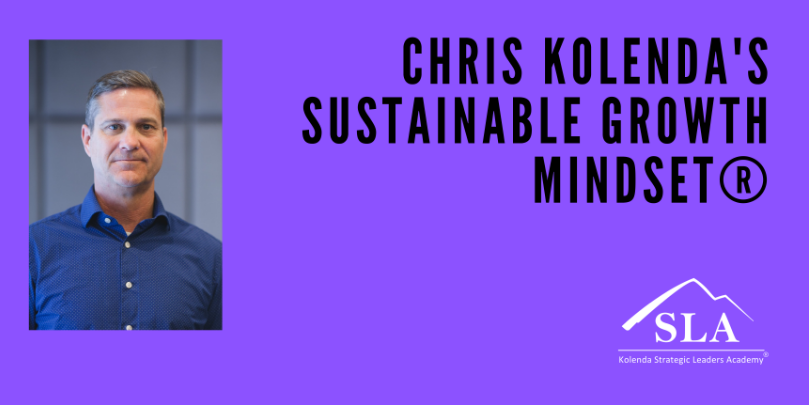Proactive versus Reactive Accountability; Without Accountability, your Plans can Quickly Fall Apart

Unfortunately, you cannot completely avoid reactive accountability. You have to tally the metrics and address the mishaps, wins, and mixed performances that are parts of business and life.
To run a successful business, we must hold people accountable to do the things they promised to do, such as:
- Finishing tasks
- Following up with clients
- Achieving sales quotas
Without accountability, your plans can quickly fall apart. You may think, “But Chris, why don’t people just do what they said they’d do? Why do I have to keep track of everything? Why don’t they just tell me the truth? I can’t do anything about the situation after the fact. I need my team to act like grown-ups.”
Sound familiar?
What if I told you there’s a better way to hold your team accountable? There are actually two types of accountability – reactive and proactive.
Reactive accountability happens after the fact: you tally the quarterly metrics, your team had an incident, the report is late, you lost a key account.
Now you’re mad.
You’re embarrassed.
You’re losing money.
With emotions surging, it’s easy to fly off the handle – or to push others out of the way and do the work yourself. The worst part is that you have to have those difficult conversations. Ugh!
And if you don’t, you know the problem will only get worse. Lowering your standards is not the answer. Having others redo the work is a recipe for resentment. Constantly operating in fire-fighting mode is stressful, leaving little time for innovation, creativity and joy.
Problems that are chronically avoided create a toxic work environment.
Unfortunately, you cannot completely avoid reactive accountability. You have to tally the metrics and address the mishaps, wins, and mixed performances that are parts of business and life. But you can have a lot less stress in your life and business when you embrace proactive accountability.
Proactive accountability reduces the likelihood of misfires and increases the probability of success. It’s also a lot more fun. Proactive accountability is what you do to shape behavior. You set expectations, provide the nudges that celebrate the right actions, and adjust the habits that lead to breakdowns.
Remember when you taught your child to ride a bike? You didn’t simply correct them when they fell over (reactive accountability), you showed them how to ride and encouraged the right habits.
Keep pedaling!
Keep your back straight!
Look where you want to go!
You got it! Keep going!
If you saw them wobbling or slowing their pedal speed, you nudged them to change their actions because you knew in advance the consequences of bad habits and poor skills.
Your awesomeness in teaching your child to ride a bike is your secret to leadership success.
By encouraging the behaviors and habits that lead to success and nudging ineffective practices in a better direction, you dramatically increase the chances of superior performance — and joyful high-fives when it comes to measuring results.
You’re right back on track with:
- “I like how you made the customer feel heard and addressed his problem immediately.”
- “You did right by raising the red flag on this safety concern. Now we can fix it before someone gets hurt.”
- “You nailed it when you took action to fix that bottleneck. That’s exactly the initiative we need.”
Proactive accountability improves results and creates more opportunities for joyful reactive accountability.
Better accountability increases performance and reduces corrective action, so you have the time and energy to innovate and grow.
The 3 C’s of Accountability
1. Clarity. Your expectations must be so clear that an 8-year-old could say them to you perfectly. People need to know the why behind the expectations. All you need to do is add “so that we achieve x. y, z outcomes.”
Checklists are terrific ways to make expectations clear. If they’re good enough for astronauts to use, then they’re probably intelligent steps for me and you.
2. Consistent Consequences. Recognize when people are doing the little things right and be specific. “I like how you took the initiative to pull the irate customer away from Jim.”
Apply the right nudge when you see indicators that the person has not yet mastered the proper habits, “Here’s a different way to defuse tension. [Practice] How does that feel to you?”
Step in when you notice someone is distracted, “You seem pre-occupied today. Am I wrong about that?” If necessary, give them the time to deal with whatever’s on their mind so they can rejoin the workday free of distractions.
Standards are arbitrary if you only address them on certain days of the week or with some people and not others. If the rules do not apply to you, they should not apply to any other employee.
Model the behaviors you expect from everyone on your team. When you don’t do that, people see you as a hypocrite.
At the same time, people expect you to account for extenuating circumstances with sound judgment.
3. Caring. People respond well to feedback when they believe you have their best interests at heart. Otherwise, they feel like you are picking on them or playing favorites. Use your weekly 15-minute check-in with your subordinates and quarterly counseling to build your relationship, help them develop and use their superpowers, and set them up for future success.





 pexels-kampus-production-8428051.jpg
pexels-kampus-production-8428051.jpg


